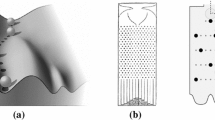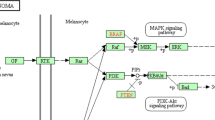Abstract
Advancing the reductionist conviction that biology must be in agreement with the assumptions of reductive physicalism (the upward hierarchy of causal powers, the upward fixing of facts concerning biological levels) A. Rosenberg argues that downward causation is ontologically incoherent and that it comes into play only when we are ignorant of the details of biological phenomena. Moreover, in his view, a careful look at relevant details of biological explanations will reveal the basic molecular level that characterizes biological systems, defined by wholly physical properties, e.g., geometrical structures of molecular aggregates (cells). In response, we argue that contrary to his expectations one cannot infer reductionist assumptions even from detailed biological explanations that invoke the molecular level, as interlevel causal reciprocity is essential to these explanations. Recent very detailed explanations that concern the structure and function of chromatin—the intricacies of supposedly basic molecular level—demonstrate this. They show that what seem to be basic physical parameters extend into a more general biological context, thus rendering elusive the concepts of the basic level and causal hierarchy postulated by the reductionists. In fact, relevant phenomena are defined across levels by entangled, extended parameters. Nor can the biological context be explained away by basic physical parameters defining molecular level shaped by evolution as a physical process. Reductionists claim otherwise only because they overlook the evolutionary significance of initial conditions best defined in terms of extended biological parameters. Perhaps the reductionist assumptions (as well as assumptions that postulate any particular levels as causally fundamental) cannot be inferred from biological explanations because biology aims at manipulating organisms rather than producing explanations that meet the coherence requirements of general ontological models. Or possibly the assumptions of an ontology not based on the concept of causal powers stratified across levels can be inferred from biological explanations. The incoherence of downward causation is inevitable, given reductionist assumptions, but an ontological alternative might avoid this. We outline desiderata for the treatment of levels and properties that realize interlevel causation in such an ontology.
Similar content being viewed by others
References
Bailly F., Longo G. (2006) La singularité physique du vivant. Hermann, Paris
Bailly F., Longo G. (2008) Extended critical situations. Journal of Biological Systems 6(2): 309–336
Bailly F., Longo G. (2009) Biological organisation and anti-entropy. Journal of Biological Systems 17(1): 1–34
Boogerd F. et al (2005) Emergence and its place in nature: A case study of biochemical networks. Synthese 145(2): 131–164
Bunge M. (2003) Emergence and convergence. Toronto University Press, Toronto
Counillon L., Pouyssegur J. (2000) The expanding family of eukaryotic Na+/H+ exchangers. Journal of Biological Chemistry 275: 1–4
Darwin, C. H. (1868). The variation of animals and plants under domestication. (Vol. 2). London: John Murray.
Dennett, D. (1996). Darwin’s dangerous idea. Simon & Schuster.
Frankel J. (1989) Pattern formation: Ciliate studies and models. Oxford University Press, Oxford
Frankel, J. (2000). Cell polarity in ciliates. In D. Drubin (Ed.), Cell polarity (pp. 78–105).
Hattiangadi J. (2005) The mind as an object of scientific study. In: Erneling E.C., Johnson D.M. (eds) Mind as a scientific object. Oxford University Press, Oxford
Jablonka E., Lamb M. J. (2008) The epigenome in evolution: Beyond the Modern Synthesis. Vogis Herald 12: 242–254
Kim J. (1993) Supervenience and mind. Cambridge University Press, Cambridge
Kim J. (1998) Philosophy of mind. Westview Press, Boulder
Kim J. (1999) Making sense of emergence. Philosophical Studies 95: 3–36
Kim J. (2005) Physicalism, or something near enough. Princeton University Press, New Jersey
Kitcher P. (1984) 1953 and all that. A tale of two sciences. Philosophical Review 93: 335–373
Krick, F. (1958). Symposia of the Society for Experimental Biology, 12, 138–63.
Lesne A. (1998) Renormalization methods. Wiley, New York
Lesne A., Victor J. M. (2006) Chromatin fiber functional organization: Some plausible models. The European Physical Journal E 19: 279–290
Lesne A. (2008) Robustness: Confronting lessons from physics and biology. Biological Reviews 83: 509–532
Lewis, D. (2000). Causation as influence. The Journal of Philosophy, 182–197
Monod J. (1970) Le hasard et la nécessité. Seuil, Paris
Morange M. (2003) La vie expliquée?. O. Jacob, Paris
Morgan L. (1923) Emergent evolution. Williams and Norgate, London
Mossio M., Longo G., Stewart J. (2009) Computability of closure to efficient causation. Journal of Theoretical Biology 257(3): 489–498
Noble D. (2006) The music of life. Biology beyond the genome. Hardback, London
Prigogine I. (1969) Symmetry breaking instabilities in biological systems. Nature 223: 913–916
Prigogine I., Stengers I. (1979) La Nouvelle alliance. Gallimard, Paris
Rosenberg A., Kaplan D. M. (2005) How to reconcile Physicalism and Antireductionism about Biology. Philosophy of Science 72: 43–68
Rosenberg A. (2006) Is epigenetic inheritance a counterexample to the central dogma?. History and Philosophy of the Life Sciences 28: 549–566
Simondon G. (1964) L’individu et sa genèse physico-biologique. Puf, Paris
Tost, J. (2009). DNA methylation: An introduction to the biology and the disease-associated changes of a promising biomarker. In J. Tost (Ed.), DNA methylation: Methods and protocols (Vol. 507). Berlin: Springer.
Varela F., Maturana H., Uribe R. (1974) Autopoiesis: The organization of living systems, its characterization and a model. Biosystems 5: 187–196
Waters, C. K. (2008). Beyond theoretical reduction and layer-cake anti-reduction. PhilSci Archive. http://philsci-archive.pitt.edu/3834//.
Wimsatt W. (2000) Emergence as non-aggregativity and the biases of reductionism. Foundations of Science 3(5): 269–297
Wimsatt W. (2007) Re-engineering philosophy for limited beings. Harvard University Press, Cambridge
Author information
Authors and Affiliations
Corresponding author
Rights and permissions
About this article
Cite this article
Perovic, S., Miquel, PA. On Gene’s Action and Reciprocal Causation. Found Sci 16, 31–46 (2011). https://doi.org/10.1007/s10699-010-9199-2
Published:
Issue Date:
DOI: https://doi.org/10.1007/s10699-010-9199-2




